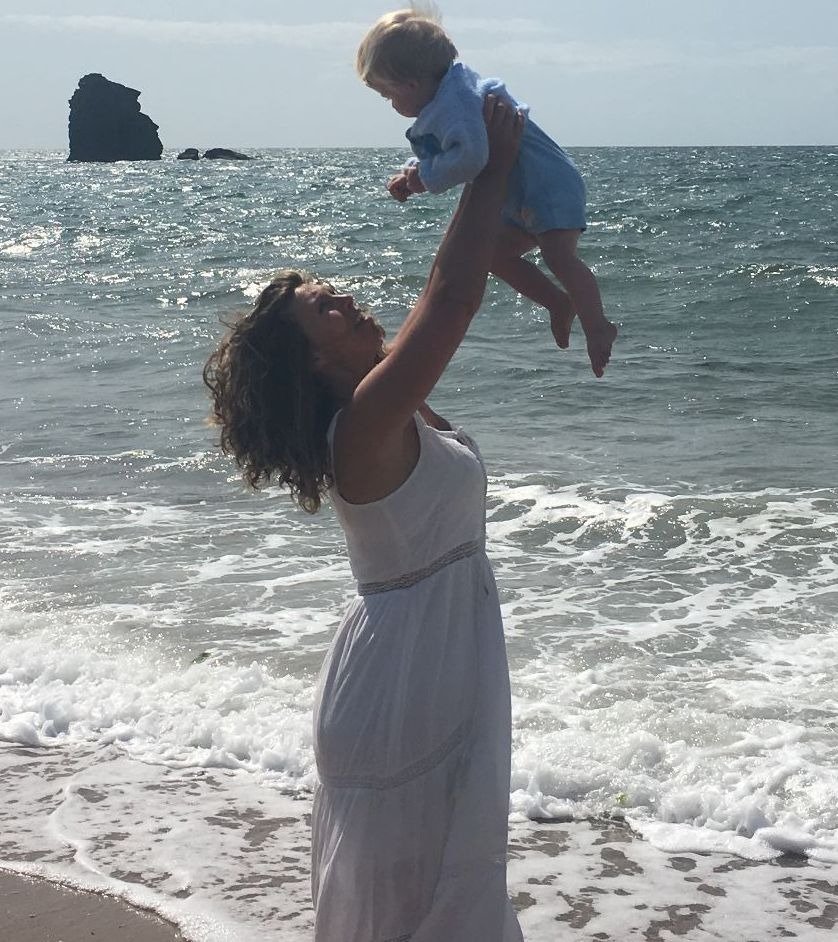Are your Baby Clothes Toxic – Everything a parent needs to know.
As a parent it’s scary to know that our kids’ clothes are drenched with harmful chemicals and toxins. Here are some important tips and please share to help spread the word.
Are your Baby Clothes Toxic – Everything a parent needs to know.
As a parent it’s scary to know that our kids’ clothes are drenched with harmful chemicals and toxins. Here are some important tips and please share to help spread the word.
Why Choose Non-Toxic Clothing?
More than 8,000 chemicals are used in clothing manufacture; So there is a good chance your babies clothes are toxic. Most of these chemicals contain carcinogenic ingredients, neurotoxins, endocrine disruptors and allergens that could be downright hazardous to your health. Did you know “organic”, “sustainable” and “eco-friendly” does not mean the clothes do not contain any toxic chemicals as well?
Why it matters more to your baby:
When toxins are absorbed through your skin — your largest organ — they bypass your liver, the organ responsible for removing toxins.
YOUR baby’s skin is more porous than adult skin making it easy for the chemicals present in clothing to enter into their internal organs that are still developing and maturing. There are “critical periods” in early childhood development when exposure to a toxin can permanently alter the way an individual’s biological system operates. Not every baby is same, so while these chemicals may appear to develop itching, skin rashes, swelling, dermatitis and eczema in some, they may not appear to bother others. If your baby has mysterious health symptoms that you can’t seem to get control over, it’s worth checking out whether your baby’s clothes could be the problem.
Nine harmful chemicals found in most baby clothing:
Formaldehyde // used to give a permanent press effect to clothing, to increase stain resistance and for colour fasting. Other chemical names include Formalin, Methanal, Methyl aldehyde, Methylene oxide, Morbicid acid, and Oxymethylene.
The dangers: Environmental Protection Agency links formaldehyde to eye, nose, and throat irritation; wheezing and coughing; fatigue; skin rash; and severe allergic reactions. Known to cause cancer and may trigger asthma attacks.
https://www.epa.gov/formaldehyde/facts-about-formaldehyde
Phthalates // There are around 50 or so different types of phthalates out of which 6 are banned by CPSIA in children’s toys and child care articles. These chemicals are not restricted from use in children’s clothing.
The dangers: phthalates belong to the family of endocrine disrupting chemicals or EDCs and are known hormone disrupters linked with birth defects, breast cancer, infertility, liver cancer, diabetes, obesity, and now with autism and ADHD in pregnancy
https://www.babycenter.com/0_phthalates-what-you-need-to-know_3647067.bc
.
PBDEs or polybrominated diphenyl ethers // are known neurotoxins used as flame retardant in consumer products including children clothing. In a research report released by CDC in 2008, 97% Americans had flame retardants in their blood, and those ages 12 to 19 had the highest levels.
The dangers: research studies in humans showed thyroid disruption, memory and learning problems, delayed mental and physical development, lower IQ, advanced puberty and reduced fertility.
https://www.ncbi.nlm.nih.gov/pmc/articles/PMC1069057/
Antimony // used as a catalyst in the making of polyester. Also, used as a flame retardant in sleepwear. In higher concentrations, it can act like the poison arsenic.
The dangers: depression, vomiting, dizziness, kidney and liver damage. One of the compounds, antimony trioxide is also believed to be carcinogenic.
https://www.globalhealingcenter.com/natural-health/health-dangers-of-antimony/
NPEs or nonylphenol ethoxylates or nonylphenols // are used to wash clothing in the textile industry, for example after dying. The dangers: NPEs are also endocrine disrupting chemicals or EDCs – but unlike phthalates, NPEs can accumulate in the tissues of a living being.
nonylphenol ethoxylates or nonylphenols // are used to make textiles water-repellent. PFCs are thus mainly found in outerwear, such as rain jackets and shoes. But they can also be found in training pants, waterproof crib mattress covers and other items in your baby’s nursery.
The dangers: PFCs are linked with cancer and kidney diseases.
Organotins // are used as a biocide largely in cotton clothing to prevent textiles from being damaged. It is also used to provide anti-bacterial and anti-fungal properties and prevent odor if a wearer were to sweat.
The dangers: linkage with obesity along with having immunotoxic and endocrine disrupting effects.
Pesticides and Insecticides // broad spectrum organophosphates and carbamate pesticides used in conventional cotton farming are some of the most common, and most toxic pesticides used today, adversely affecting the human nervous system even at low levels of exposure. Cotton is grown on just 2.5% of the world’s total agricultural land, but uses 22.5% of the world’s insecticides and 10% of all pesticides, making it the world’s dirtiest grown crop. The dangers: interference with healthy neurodevelopment, leading to behavioral problems and lower cognitive function, and meet the diagnostic criteria for ADHD. These toxins also belong to the family of endocrine disrupting chemicals or EDCs and are known hormone disrupters. EPA classifies these as carcinogens and acknowledges having linkages to neurological disorders that increase the risk of Parkinson’s disease.
https://en.wikipedia.org/wiki/Pesticide
Synthetic Colors/Dyes // is a mixture of many chemicals including formaldehyde and heavy metals.
The dangers: carcinogenic and the heavy metal particles are known neurotoxins.
Babiroo The Organic Baby Clothing Co brand is known for their healthy, non-toxic apparel for your baby. With Babiroo you never have to worry about the harmful chemicals hiding in your baby’s clothing. These clothes are made from 100% certified organic cotton and are hand finished without any harmful chemicals. Babiroo follows strict procedures and inspections throughout the entire process. And, they even test their products to ensure no harmful chemicals were found in Babiroo’s baby clothes before they are sold.
Babiroo promise:
NO harmful dyes
NO pesticides
NO phthalates
NO formaldehyde
NO fire-retardants
NO harmful chemicals ever!

